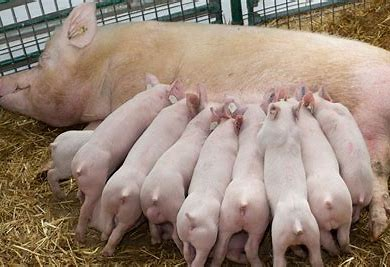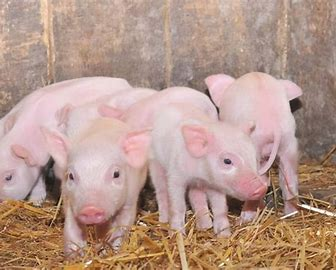
Release Date:2024.09.12
Porcine Epidemic Diarrhea (PED) is an acute intestinal infectious disease caused by Porcine Epidemic Diarrhea Virus (PEDV) with diarrhea, vomiting, decreased appetite and dehydration as the main symptoms. At Leman China Swine Conference, experts introduced the current epidemic trend and prevention methods of porcine epidemic diarrhea, providing reference for scientific prevention and control of the disease.
I. Cause of disease
1. Feeding management factors
For most farms, the occurrence of PED is mainly caused by improper management of their own feeding. Diseased pigs and newly recovered pigs are the main source of transmission of the disease. They transmit the disease to healthy pigs through feces through direct contact or indirect means, such as feces, water, materials, household appliances, fences and transportation vehicles.
2. Variation of PEDV strains
PEDV infection is the direct cause of disease in pigs, it has been widespread in farms around the world since it was first reported in the 1970s. The continuous emergence of mutant strains makes the virus more virulent, thus causing an increase in PED.

II. Clinical features
Due to the different susceptibility degree of piglets and adult pigs, the degree and severity of symptoms are also different. For piglets, the incubation period of PED is about 15 ~ 30 h. Piglets less than 7 days old have the most serious symptoms after infection. They not only have severe diarrhea and discharge oily yellow and white watery feces with blood, but also have high body temperature, vomiting, loss of appetite and inability to suck milk normally.
For adult pigs, the incubation period after infection was long and varied greatly, generally 5-8 days. The mental state of the affected pigs is poor, vomiting, diarrhea, and feed intake is significantly reduced. Most of the pigs will recover from 7 to 10 days, and basically will not die.
III. Preventive measures
1. Strengthen feeding management
In controlling the source of PED infection, we should first pay attention to the introduction of piglets and gilts, ensure the health of the imported pigs, and resolutely refuse the purchase of pigs from the epidemic area. Secondly, it is necessary to strictly control the entry and exit of people and do a good job in pest control and rodent control of breeding farms to prevent virus carriers from entering. Finally, pigs with suspected PED symptoms should be quarantined in time to prevent them from infecting the rest of the healthy pig herd.
In cutting off the transmission of the virus, the most important thing is to do a good job in the disinfection of breeding farms. For external vehicles, personnel, appliances to do serious disinfection, also pay attention to regular disinfection in the breeding farm.
In order to protect the pig herd, it is necessary to manage and regulate from many aspects such as drinking water and diet, environmental control and improving the body resistance.
2. Get vaccinated
For now, countries still rely on vaccination as the main means of preventing the disease. Common PEDV vaccines mainly include four categories: weak vaccine, inactivated vaccine, subunit vaccine and nucleic acid vaccine.

IV. Treatment measures
There are no specific drugs to treat the disease for now. Most farms use antibiotics for treatment, according to the symptoms of the disease, and timely supplement the body fluids of sick pigs. Once the disease occurs in the breeding area, the field should be sealed off first, isolate the sick pigs, and eliminate the whole field. If the sick piglets are seriously ill, they should be eliminated in time and treated harmlessly to reduce losses.
Conclusion
PED is still a major disease that hinders the healthy development of pig farming worldwide. Since 2010, the epidemic strain G2 subgroup has been a new variant, which has continuously mutated through gene insertion, deletion, recombination and other ways, bringing difficulties to the prevention and control of the disease. There is no specific drug treatment for the prevention and control of the disease. It is an effective means to prevent and control the disease to ensure the environmental hygiene of the breeding farm, do a good job in disinfection, implement scientific feeding management measures and formulate immune system according to the current situation of the breeding farm.
If you would like to learn more about the pig industry, please visit the Leman China Swine Conference website for more information.
Source:SWINE INDUSTRY SCIENCE
If there is infringement, please contact to delete.